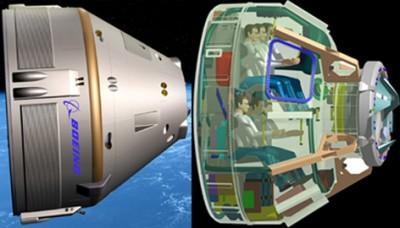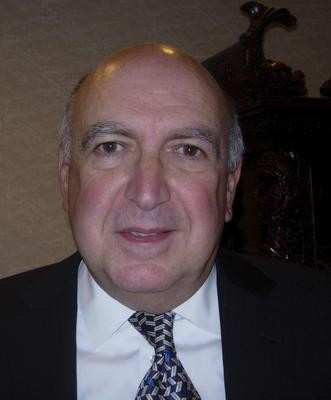CST-100 Spacecraft To Be Manufactured And Operated At Kennedy
Space Center
Boeing plans to consolidate its Commercial Crew program office,
manufacturing and operations at the Kennedy Space Center (KSC), the
company announced Monday. Boeing, in partnership with Space
Florida, has an arrangement to use the Orbiter Processing
Facility-3 (OPF-3) to manufacture, assemble, and test the
company’s Crew Space Transportation (CST)-100 spacecraft.
CST-100 Boeing Image

"We selected Florida due to the cost benefits achieved with a
consolidated operation, the skilled local workforce, and proximity
to our NASA customer,” said John Mulholland, vice president
and program manager of Commercial Programs for Boeing Space
Exploration. “Pending the continued selection of Boeing for
future Commercial Crew development and service contracts, and
sufficient NASA funding, we project a Commercial Crew program
workforce ramping up to 550 local jobs by our scheduled operational
date of December 2015. The CST-100 will provide NASA with reliable,
safe, and affordable transportation to the International Space
Station and other destinations in Low Earth Orbit.”
"We are extremely pleased that Boeing will locate its Commercial
Crew headquarters here in Florida," said Frank DiBello, president
of Space Florida, the State’s aerospace economic development
agency. "This positions our state well for future growth and a
leadership role in NASA's next generation human space exploration
initiatives. It is also a key factor in ensuring Florida's
space-related economy continues to thrive after shuttle
retirement."
Frank DiBello

Boeing is working with Space Florida on agreements to use
Kennedy Space Center’s Orbiter Processing Facility Bay 3
(OPF-3) and Processing Control Center (PCC) facilities for
Commercial Crew program execution. The OPF-3, previously used to
perform maintenance on the space shuttle orbiters, features
approximately 64,000 square feet of manufacturing and processing
areas and about 64,000 square feet of office, laboratory and
logistics areas. The PCC consists of approximately 99,000 square
feet of control rooms and office space Boeing plans to use to
support mission operations, training and program offices. The PCC
previously supported shuttle orbiter testing, launch team training,
and computer system software and hardware development and
maintenance operations.
In partnership with Space Florida, Boeing plans to modernize the
facilities to provide efficient production and testing operations
that optimize the company’s best practices from satellite
manufacturing, space launch vehicles and commercial airplane
production programs.

The Commercial Crew program consists of developing,
manufacturing, testing and evaluating, and demonstrating the
CST-100 spacecraft, launch vehicle and mission operations -- all
part of Boeing’s Commercial Crew Transportation System (CCTS)
-- for NASA’s new Commercial Crew human spaceflight program
that will provide flights to the International Space Station.
Boeing’s system will also be capable of supporting Bigelow
Aerospace’s planned orbital space complex. The program is
based on the company’s experience and innovation over the
past 50 years of human spaceflight and nearly 100 years of
commercial aviation.
The CST-100 is a reusable capsule-shaped spacecraft based on
proven materials and subsystem technologies that can transport up
to seven people, or a combination of people and cargo. Boeing has
designed the spacecraft to be compatible with a variety of
expendable rockets and selected the United Launch Alliance’s
Atlas V launch vehicle for initial CST-100 test flights in
2015.
In his remarks, Mulholland expressed Boeing’s gratitude to
the organizations that contributed to the success of this project,
including NASA, Space Florida, Economic Development Commission of
Florida’s Space Coast, Enterprise Florida, the Brevard County
Board of County Commissioners, and Brevard Workforce.
 ANN's Daily Aero-Linx (05.02.24)
ANN's Daily Aero-Linx (05.02.24) ANN's Daily Aero-Term (05.02.24): Touchdown Zone Lighting
ANN's Daily Aero-Term (05.02.24): Touchdown Zone Lighting Aero-News: Quote of the Day (05.02.24)
Aero-News: Quote of the Day (05.02.24) ANN FAQ: Contributing To Aero-TV
ANN FAQ: Contributing To Aero-TV NTSB Final Report: Cirrus Design Corp SR20
NTSB Final Report: Cirrus Design Corp SR20





